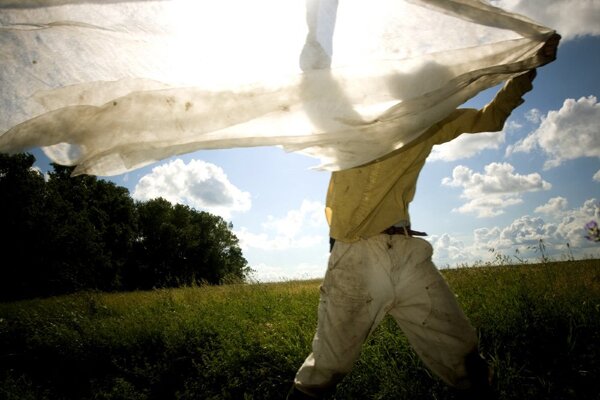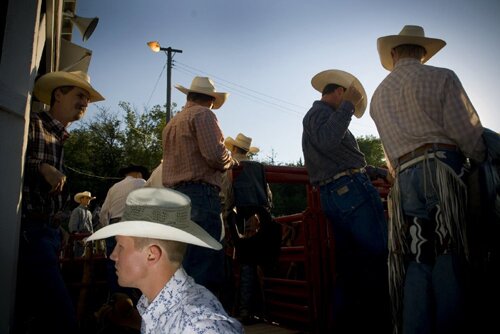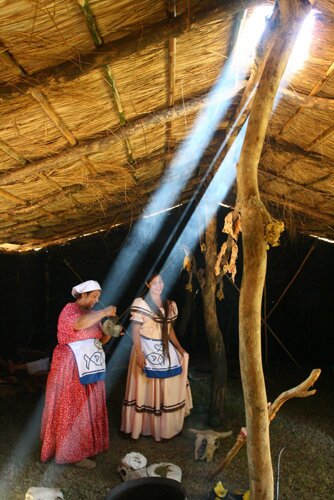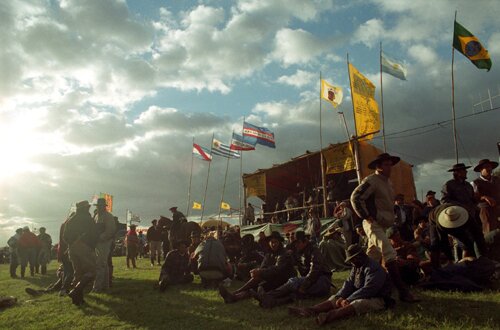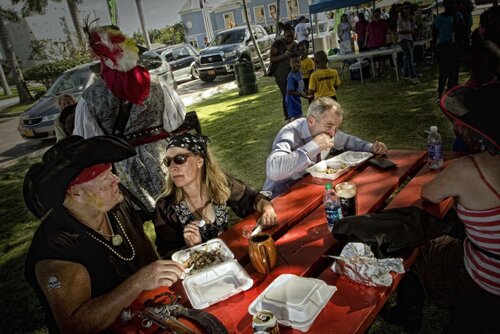Ten questions with photographer Federico Estol
Translated by Ellen Donnison
Federico Estol was born in Uruguay in 1981. He graduated from the Polytechnic University of Cataluña in Barcelona and specialises in work based in the countryside and rural areas. He currently works on social projects for El Programa Uruguay Integra and as a freelance photojournalist for local media. His work has been shown in exhibitions and festivals in Uruguay, Argentina, Spain, Germany, Finland, Holland and the United States. La Isla del Tesoro (2014) (The Island of Treasure) is his third photo book to be published, following his previous photo books, Fiestas del Uruguay (2009) (Parties of Uruguay) and Hello Montevideo (2011). He has received various distinctions, funding and scholarships and was recently awarded with the Premio Latinoamericano de Fotografía (the Latin American Prize of Photography) in 2012 in the ‘urban-rural’ category, by René Burri (Magnum Photos), and by the Premio Fotolibro Latinoamericano del Centro de Fotografía de Montevideo (the Latin American Prize for Photo Books from the Centre of Photography, Montevideo) in 2013.
Ventana Latina: How did you become a photographer?
Federico Estol: When I was fourteen years old I found a camera in an airport and began taking photos of a family trip to Venezuela, and I haven’t stopped since. Photography found me by chance and I am very grateful for this. For me it’s more than art; it’s a way of life and my focus on documental photography has developed as the years have gone by. It’s important for me to utilize this tool to sensitize or support a new concept that could help to further unite human beings and/or change something about our world.
VL: What do you try to interpret through your photos?
FE: The images help me to become familiar with my surroundings and also myself; they have their own life and are interpreted in very distinct ways by the people who look at them. I’m always drawn to series that touch on fantasy and question reality. I like to focus on local identity and its influence on people’s daily life.
VL: How did the project Hello Montevideo come to fruition?
FE: While checking the weather on the Internet I came across another place called Montevideo in Minnesota. I saw it as the alter ego of the city I live in, a twin city where there are no Uruguayans but that shares identical factors, as if they were transferred to it so it could have the same name. The statue of our country’s hero, José Artigas, gave rise to so many things. When it was donated to the town in 1949, the Montevideo Fiesta Days were created. This party involves streets decorated with Uruguayan flags, and fiesta queens dressed in traditional gowns from Montevideo inspired by the paintings of Pedro Figari. The people of the town learn historical and geographical facts about Uruguay’s Montevideo, and view José Artigas as the father of Uruguayan independence. Artigas is also featured on the local police logo and all those on patrol wear an image of his face on their uniforms as a warning to those who attempt to break the law. This story had existed for a long time only no one had investigated it. When I went to record the images to make this second photo book, the series had great meaning in Uruguay.
VL: Tell about your most recent project, The Island of Treasure.
FE: The pirate Francis Drake named the Cayman Islands and this territory has always served as an ideal sanctuary for piracy. The identity of the Cayman Islands has not changed much for those who celebrate its traditional festival, ‘Pirates Week’, where people live like pirates for a fortnight. I blended the buccaneers’ pride with the activities of tax evaders and their offshore services. Historically pirates took money from others and used the islands to hide their treasures and today the same thing still happens. The accountants and bankers from powerful countries use the islands to hide the treasures of multimillionaires and multinationals, without paying tax and taking money that belongs to the world’s ordinary citizens. The concept behind this work was to take the identity of a place as a starting point and from this make a new history. Physical paradises are strange places where few things are tangible and that demonstrates the dimension of their global impact, therefore I decided to narrate from a fictional perspective about a place in the Caribbean sea where the pirates invaded and where little by little, those invaders began converting themselves into executives. Fiction is a very useful tool for documental photography, although this may seem contradictory. This work has won the Latin American photo book prize from CDF Montevideo and was selected by various important festivals such as: Noorderlicht in Holland, Fotograma in Uruguay, Backlight in Finland and Paraty em Foco in Brazil.
VL: What inspires you about Uruguay?
FE: My country is fairly unknown and doesn’t involve itself in international geopolitics; because of this we have a lot of freedom to talk about many themes that are current in the world. Uruguayan photography is prominent within our borders and I believe that this motivates emerging photographers who live here. I am very inspired by the Latin and European mix that we have here, the films serie B that are aired on television, the creative work within a small budget, the local cultural movement and existing freedom that allows people to talk about whatever they want.
VL: How did your project Fiestas del Uruguay, come into existence?
FE: The project Fiestas del Uruguay is my introduction to editorial photography and entailed a large production. This lasted three years and was where we began visiting the places that host this country’s celebrations, comprising of more than 150 events with distinct activities centring on national, regional and local identity. The festivals are centred on religion, immigrants, gauchos, the harvest and carnivals and evoked emotion in me on numerous occasions and an understanding of what it felt like to be a true national. Here I understood how identities are constructed and the significance of creative opportunities in a Latin American country, which achieved many things in a little over two hundred years.
VL: Have you worked with other media such as video or audio?
FE: I have worked with video and I recently began making some web documentaries about the Uruguayan border with Brazil. Little by little I am realising the importance of video in bringing something more to the viewer, which contributes to the audio-visual narrative and the production of a story; we should be clear about photography’s limits, it cannot tell us everything.
VL: Are you currently working on a new project?
FE: I have designed my next project and after my trip to the Backlight photo festival in Finland I will start its production. The theme is consumerism among young people of varying ages in relation to the most important sports labels and their relationship to sport’s biggest stars.
VL: Tell us a little about your experience producing three books: Fiestas del Uruguay, Hello Montevideo and La Isla del Tesoro.
FE: I always say it is important to publish material so that it marks the conceptual eras of one’s work as an author. My first book was my biggest project and therefore I developed a good methodology, which I applied to my editorial work. Your first book is always a little cathartic and it takes a lot to edit it because of your attachment to your first publication. My book, Fiestas del Uruguay, was a commercial venture and the text that accompanied the images was distributed in equal sized sections. The second book of photographs, Hello Montevideo, didn’t fit in with the current type of photo book and was not conceived this way from a design point of view. Similarly I had a fondness for it because it helped me define myself as an author and I will always be grateful for this. This year I was faced with what I considered to be my first photo book, La Isla del Tesoro. I believe it’s a piece of art thought about from its conception to fit in with this format. The photographs, the design, the printing, the paper, the ink, the whole combination has a formal coherence that works in accordance with the concept of the project. I am very content with the final result; one challenges oneself to work with Uruguay’s technical resources to produce a piece of great quality work. It gave me a lot of experience for other ideas in the future.
VL: What represents a good photograph for you?
FE: A good image should first surprise the viewer with either humour or intrigue that captures their attention. Second, it should pose a question that presents a story that wants to be told. Finally, it should stay imprinted within the viewer’s unconscious. If these requirements are fulfilled, you are very fortunate as this is not one of life’s common occurrences.
To learn more about Federico Estol’s work, click here.

